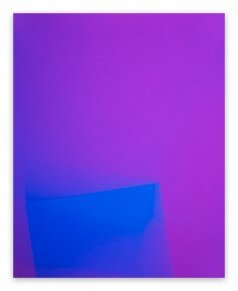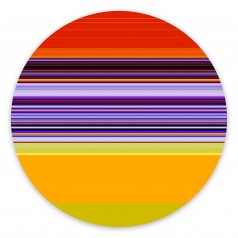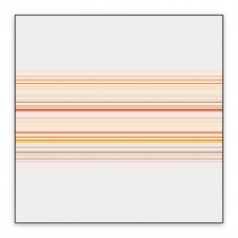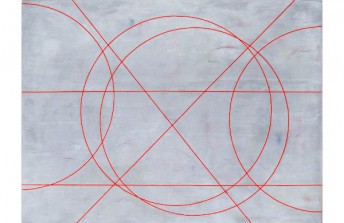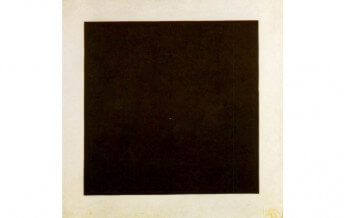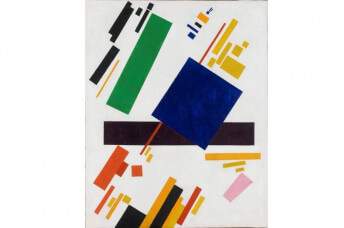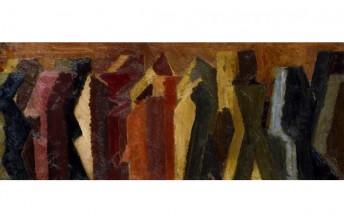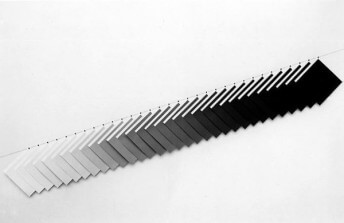The Assembled Art of Barbara Kasten
Mar 8, 2017
At first glance the art of Barbara Kasten may not seem subversive. Kasten builds architectonic sculptural compositions in her studio then lights and photographs them, transforming temporary, three-dimensional constructions into lasting, two-dimensional relics. A multi-media exploration of light, shadow, color, form and space: hardly controversial. But look again. What else do you see? What is revealed to you beyond what is apparent in the picture? Yes, Barbara Kasten is a painter, a sculptor, a photographer and a videographer, but her true medium is perception. Perception is a loaded word, one that touches on the most important concept of our time: the difference between reality and falsehood. Kasten asks us to open ourselves up to what is really going on. Her images are formally abstract in that they possess a visual language informed by Modernist abstract history. But they are also conceptually abstract. They deal with the forces of light and shadow, which have the power to reveal and conceal, and the mediums of photography and video, which handily manipulate what we see. That is what makes the art of Barbara Kasten subversive. It challenges what we think we know about a supposedly objective world, causing us to question our own authority on what is real, what is illusion, what is temporary and what might last.
Storehouses of Thoughts and Beliefs
When we call the things Barbara Kasten builds and photographs architectural, what do we mean? Is architectural space purely utilitarian; a physical environment built to contain the activities and products of humanity? Or can it be something more? Kasten addressed this question in an article published in 2015 in Art in America, titled Architectural Light. In the article, she recalls working in Europe after school and encountering an ancient architectural tradition for the first time. She saw old buildings ravaged by time and war, and new buildings reflecting modern social needs. “In this new environment,” Kasten writes, “it became clear to me that architecture could embody changes in thought and belief, bearing witness to both human atrocities and utopian aspirations.”
She sensed architecture could evoke meaning, while realizing such meaning is transitional. Some people see a bullet hole in the wall of a building and insist it be repaired. Others see the same bullet hole and insist it be remembered. Whether the bullet hole remains revealed or becomes concealed depends on the perception of the decision makers, whose choice then affects the perception of everyone who encounters the building in the future. Yes, architectural space is utilitarian: it is the physical culmination of space and form. But it can also be meaningful, even transcendent. When we say the art of Barbara Kasten in architectural, we do not only mean it addresses space and form. We mean the conversation between all of its other potentialities inspires the work.
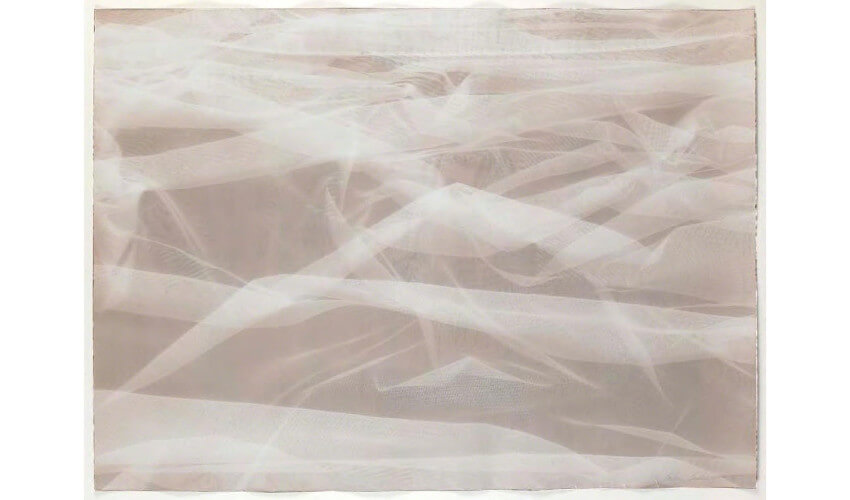 Barbara Kasten - Photogenic Painting Untitled 75-30, 1975, © 2019 Barbara Kasten and Bartolami Gallery, New York
Barbara Kasten - Photogenic Painting Untitled 75-30, 1975, © 2019 Barbara Kasten and Bartolami Gallery, New York
Shadow and Light
Documentation is another element that comes into play in the work of Barbara Kasten. Architecture is temporary. Thoughts and beliefs change. But through the magic of light the photographic process can capture the memory of objects, forms and compositions, creating new, albeit incomplete storehouses of thoughts and beliefs that can survive even after the objective world has moved on. In the early 1970s, although she was a trained painter and sculptor who knew nothing about photography, Kasten embraced these possibilities and made the photographic process her primary focus in the studio.
She began her exploration of photography by making photograms and cyanotypes. A photogram is created when photosensitive paper is exposed to light. Compositions can be created using the interplay between shadow and light by inhibiting which areas of the paper become exposed by placing objects between the paper and the light source. A cyanotype is created when photo chemicals are painted onto a surface. When exposed to light, the chemicals reveal themselves in a cyan hue. Says Kasten about this phase of her evolution, “Having a studio art background, the negative-positive photogram allowed me to explore the illusionist properties of photography with tangible sculptural materials and constructions.”
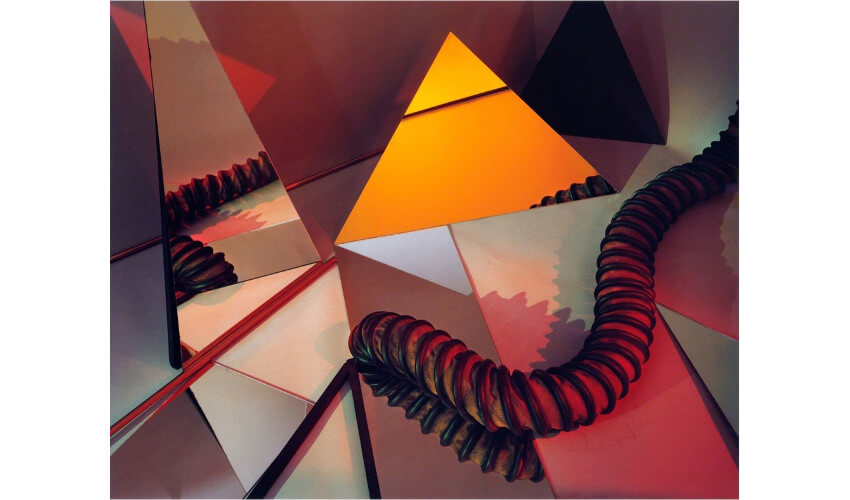 Barbara Kasten - Construct NYC 8, 1983, © 2019 Barbara Kasten and Bartolami Gallery, New York
Barbara Kasten - Construct NYC 8, 1983, © 2019 Barbara Kasten and Bartolami Gallery, New York
Color and Geometry
To create the compositions that appeared in her photograms and cyanotypes, Kasten built elaborate assemblages that could cause complex networks of shadows. That process led to a breakthrough as she realized the assemblages she was building could become the direct focus of her work. She switched her process initiating a body of work she calls Constructs. For the Constructs, she builds geometric, architectonic, sculptural compositions that incorporate mirrored panels mixed in with a variety of other objects and materials. She then lights the composition, takes a photograph of it, and disassembles it. The resulting image serves as two-dimensional recording of a temporary, three-dimensional manifestation of form and space.
The visual language of her Constructs evokes Modernist movements like Constructivism, Suprematism and the Bauhaus School. It incorporates aesthetic elements like horizontal and diagonal lines, triangles, circles, rectangles, cones and spheres. By adjusting the intensity and direction of the lights she uses, Kasten adds geometric complexity through shadow, creating variations in depth and dimension. By adjusting the hue of the lights she adds exhilarating bursts of color. The Constructs bring a vibrant contemporary sensibility to a historic Modernist aesthetic using what Kasten calls, “light’s power to transform materiality.
 Barbara Kasten - Construct PC VI, 1982 (Left) and Construct XVI, 1982 (Right), © 2019 Barbara Kasten and Bartolami Gallery, New York
Barbara Kasten - Construct PC VI, 1982 (Left) and Construct XVI, 1982 (Right), © 2019 Barbara Kasten and Bartolami Gallery, New York
Impossible Landscapes
As Kasten advanced her understanding of how light and mirrors could alter her Constructs, she became interested in how the idea would translate into actual architectural spaces. In a series of monumental Constructs she created in the 1980s, she brought mirrors and cinematic lighting crews to various architectural locations and photographed them as though they were assemblages in her studio. These projects were the ultimate manifestation of her idea of the Impossible Landscape, using mirrors and light to create images that seem digitally altered or collaged. But the images are in fact unaltered single exposures, meticulously staged by Kasten for the photograph.
In a particularly compelling series of architectural site images, Kasten went on location to the Pollock-Krasner House and Study Center. There, she placed mirrors and colored lights in carefully choreographed arrangements and photographed the spaces. The haunting images capture the architectural elements of the physical space where Jackson Pollock and Lee Krasner lived and worked. The natural environment outside the windows, the remnants of paint splatters on the floor left behind by these artists, and images of the artists at work appear in fragments in the images. These Juxtapositions as Kasten calls them are objective documentations of architectural reality, yet they capture a splintered, dramatic sense of the fragile humans who once inhabited the space.
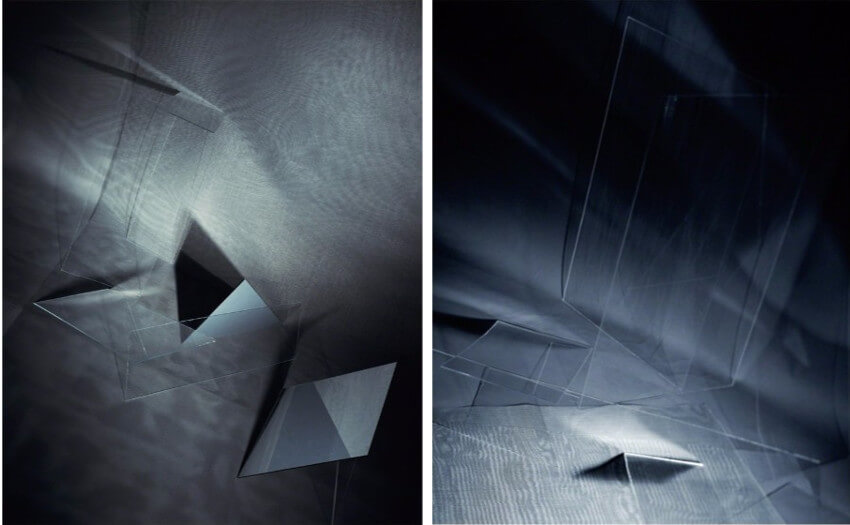 Barbara Kasten - Scene IV, 2012 (Left) and Studio Construct 127, 2011 (Right), © 2019 Barbara Kasten and Bartolami Gallery, New York
Barbara Kasten - Scene IV, 2012 (Left) and Studio Construct 127, 2011 (Right), © 2019 Barbara Kasten and Bartolami Gallery, New York
Barbara Kasten is Projecting
Recently Barbara Kasten has returned to her studio-based Constructs with a fresh perspective. She has simplified her color palette, drawing on the purity of white light. And she has limited her materials, using clear Plexiglas, which is transparent except for the edges and shadows revealed when struck with light. Even more so than her earlier Constructs and Juxtapositions, these works challenge the perception of the viewer. It is more difficult to relate to the objects being photographed, projecting more importance on the feelings the images evoke, and the awareness that we cannot be certain what we see.
Kasten has also begun working with video projections. She makes digital videos capturing light as it interacts with geometric constructions then projects them onto the surfaces of architectural spaces. The projections offer viewers opportunities to experience a reverse-engineered version of her photographs. Rather than building an architectonic space then transforming it into a two-dimensional relic, she creates two-dimensional images then transforms them into three-dimensional phenomena, appropriating the architectonic forms of site-specific architecture. The effect causes viewers once again to question what they see and know.
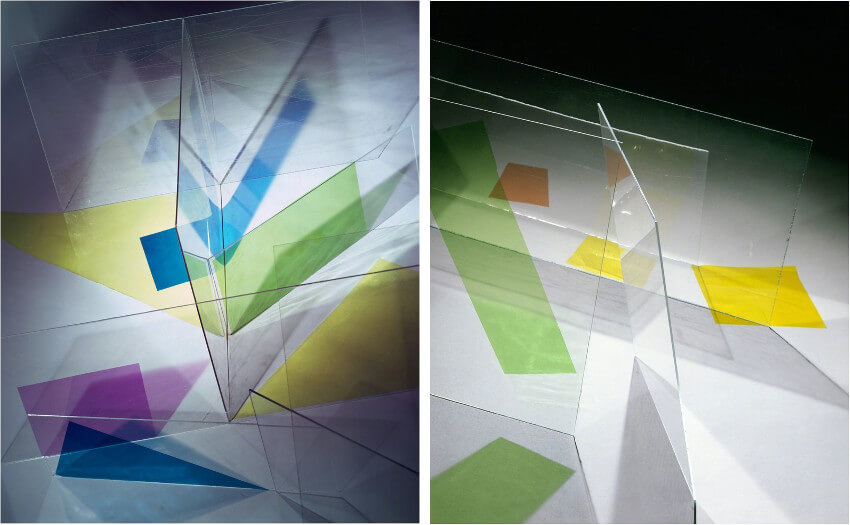 Barbara Kasten - Transposition 28, 2016 (Left) and Transposition 14, 2014 (Right), © 2019 Barbara Kasten and Bartolami Gallery, New York
Barbara Kasten - Transposition 28, 2016 (Left) and Transposition 14, 2014 (Right), © 2019 Barbara Kasten and Bartolami Gallery, New York
Perceptions and Conceptions
What is most transformative about the work Kasten creates is how it pulls us out of our fundamental assumptions about reality. We have our individual understandings of reality prior to encountering her work. Then we encounter her photographs and are faced with a shared reality: the objective information stored within the print. Then as we react to it in terms of its formal aesthetic values an abstracted reality sets in and realize we are not sure what we are seeing.
Beyond those realities, there are the realities Barbara Kasten endeavored to communicate through the work. Whether those realities become shared depends on whether the viewer perceives them. Therein lies the subversive quality of the work. Her photographs are objective: nothing is in them except what was objectively there when she created them. Yet what she built for the photographs no longer exists, so cannot be proved. Despite being filled with objective information, these photographs are inherently subjective, offering new potential realities to each new set of eyes. Like clear Plexiglas they are transparent, hiding nothing, yet in the brightest light still they cast shadows of doubt.
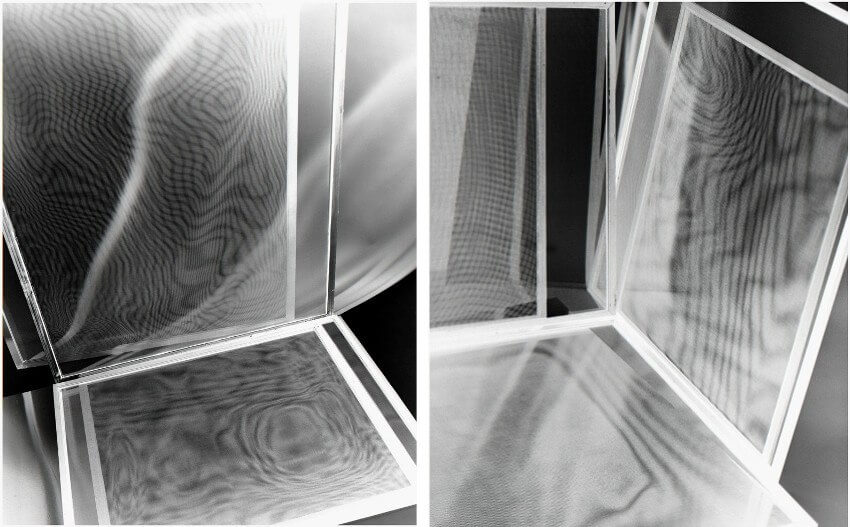 Barbara Kasten - Double Negative 5, 2012-2016 (Left) and Double Negative 6, 2012-2016 (Right), © 2019 Barbara Kasten and Bartolami Gallery, New York
Barbara Kasten - Double Negative 5, 2012-2016 (Left) and Double Negative 6, 2012-2016 (Right), © 2019 Barbara Kasten and Bartolami Gallery, New York
Featured image: Barbara Kasten - Construct XIX (detail), 1982-1983, © 2019 Barbara Kasten and Bartolami Gallery, New York
All images used for illustrative purposes only
By Phillip Barcio
Featured Artists

Tenesh Webber
1963
(USA)Canadian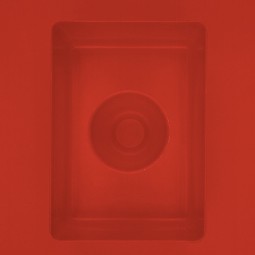
Richard Caldicott
1962
(UK)British
Seb Janiak
1966
(France)French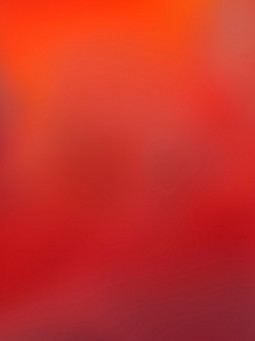
Paul Snell
1968
(Australia)Australian

